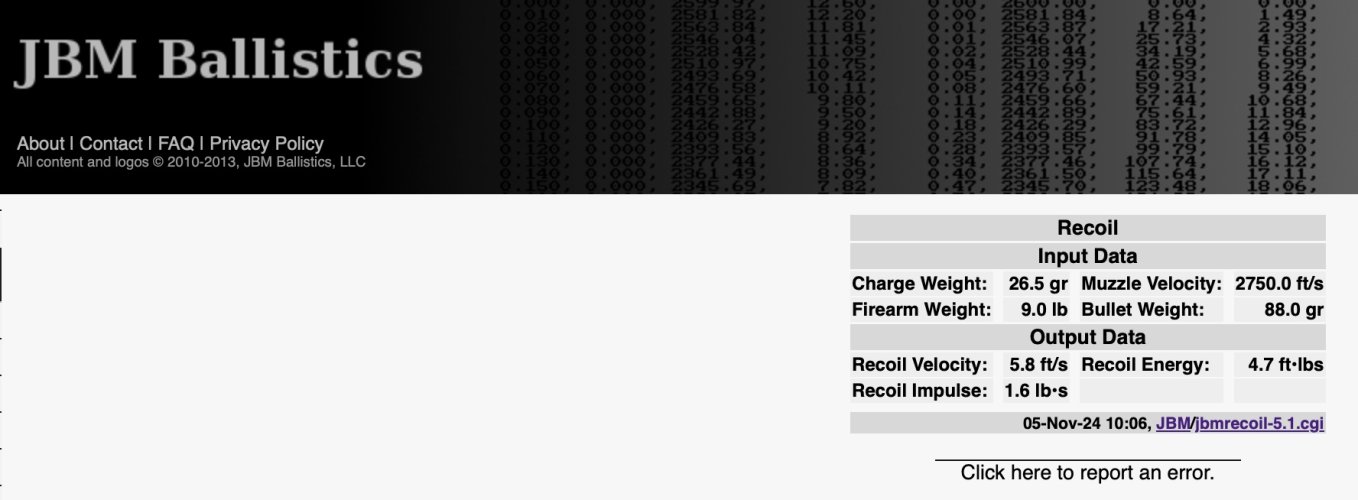chevyman181
Active member
- Joined
- Dec 17, 2019
- Messages
- 184
How does a person calculate felt recoil?
Say all things are the same except the cartridge... 8 Pound rifle, 162 gr 7mm bullet, at say 2900fps, is the felt recoil the same no matter what cartridge is pushing the projectile?
7-08, 280ai, 7mag, 7saum, if they are all in an 8 Pound rifle shooting the same 162gr projectile at the same speed, will the felt recoil be that much different?
I know the 7rum uses way more powder than 7-08 just curious if the powder charge has any effect if it's pushing the same projectile at the same speed.
Thanks
Say all things are the same except the cartridge... 8 Pound rifle, 162 gr 7mm bullet, at say 2900fps, is the felt recoil the same no matter what cartridge is pushing the projectile?
7-08, 280ai, 7mag, 7saum, if they are all in an 8 Pound rifle shooting the same 162gr projectile at the same speed, will the felt recoil be that much different?
I know the 7rum uses way more powder than 7-08 just curious if the powder charge has any effect if it's pushing the same projectile at the same speed.
Thanks
Last edited:






